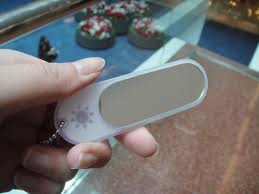UV Indicators
UV Indicator is described, comprising nanocrystalline particles of titania dispersed in a film of a polymer, hydroxyl ethyl cellulose (HEC), containing: a mild reducing agent, triethanolamine (TEOA) and a redox indicator, methylene blue (MB). The UV indicator film is blue-coloured in the absence of UV light and loses colour upon exposure to UV light, attaining within a few min a steady-state degree of bleaching that can provide a measure of the irradiance of the incident light. The original blue colour of the film returns once the source of UV light is removed. The spectral characteristics of a typical UV indicator film, and its components, are discussed and the UV-absorbing action of the titania particles highlighted. From the measured %bleaching undergone by a typical UV indicator as a function of light irradiance the indicator appears fully bleached, within 7 min, by a UV irradiance of 3 mW cm−2 or greater. The mechanism by which the UV indicator works is described. The reversible nature of the UV indicator is removed by covering a typical UV indicator with a thin, largely oxygen impermeable, polymer film, such as the regenerated cellulose found in sellotape. The product is a UV dosimeter, the response of which is related to the intensity and duration of the incident UV light, as well as the amount of titania in the film. A typical UV dosimeter film is fully bleached by 250 mJ cm−2 of UV light.
